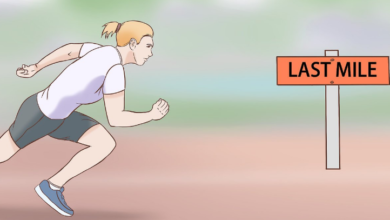What is the best way to do Tabata every day?

It’s easy to find a slew of reasons why working out isn’t in the cards on any given day.
In that case, you can use Tabata as an excuse to skip the sweat session altogether. HIIT can be done in a matter of minutes, is an excellent addition to your workout routine, and can also help you shed pounds. As an added bonus, you can make Tabata beginner-friendly.
Can a quick and intense workout like this be done on a daily basis? Here, experts discuss the safety of the “four-minute miracle workout,” as well as the rest of the information you need to know about it.
What is Tabata, and how is it used?
Izumi Tabata, a Japanese researcher, developed the four-minute Tabata workout. According to trainer Lindsey Clayton of Barry’s Bootcamp and Brave Body Project, “Tabata is 20 seconds of maximum intensity effort followed by 10 seconds of rest,” she explains. This sequence of 20 seconds on and 10 seconds off must be repeated eight times.”
Tabata’s team of Japanese researchers studied the effects of HIIT-style training on anaerobic and aerobic energy systems to the fullest extent possible. For the most part, anaerobic exercise involves short, intense bursts of activity followed by a longer, more sustained period of rest (think sprinting). Studies in Medicine & Science in Sports and Exercise found that the “Tabata protocol,” an interval training programme, improved aerobic and anaerobic power over a six-week period. The findings were published.
Rondel King, M.S., an exercise physiologist at NYU Langone’s Sports Performance Center, says that the 20:10 work/rest ratio and overall intensity distinguish Tabata from traditional HIIT training. “You’re looking for work periods to be done at maximal levels,” he says. if you’re not putting in the effort, it’s not a Tabata workout.
Is it possible to do Tabata with weights?
The good news is that the decision is entirely yours. Tabata workouts can be done with or without the use of weights. Both cardio and strength-training workouts can be done using Tabata. In order to get the most out of your Tabata workouts, Clayton recommends focusing on exercises like high knees, jumping jacks, and punching, which can be done anywhere and require minimal or no equipment. Triceps dips, push-ups, and plank dips could all be included in a strength-training Tabata routine. Don’t know where to start? You can do Tabata instead of cardio, and this four-minute workout will help you build muscle.
Is it possible to do Tabata every day?
According to King, the original Tabata protocol was carried out with high-level athletes four times per week for six weeks. Tabata training can be addicting, so it’s a good idea to discuss your specific goals and the best way to incorporate these workouts into your routine with a personal trainer for the best results. In light of the fact that not everyone is born with the athletic prowess to compete at the highest levels. (When it comes to hiring a personal trainer, here are five good reasons to do so.)
Tabata-style workouts can be easily adapted to target different muscle groups because it’s so easy to switch up the exercises. That means you can do Tabata workouts on a daily basis.
Tabata should not be used as a substitute for cardio in its entirety, according to King. As a precaution, he advises using the original protocol just twice a week and adding steady-state cardio three to five times a week. A person’s training age and recovery rate from exercise are important considerations, but ultimately, “it really depends on the individual.”
To get your heart rate up and your sweat flowing, Clayton shares one of her favourite Tabata-format workouts. Complete the prescribed number of sets for each exercise, and then move on to the next one.
- Jumping squats are a great place to begin (20 on 10 off, 2 sets)
- Push-ups are a second option (20 on 10 off, 2 sets)
- Cuts to the head (20 on 10 off, 2 sets)
- Climbers on the mountains (20 on 10 off, 2 sets)



